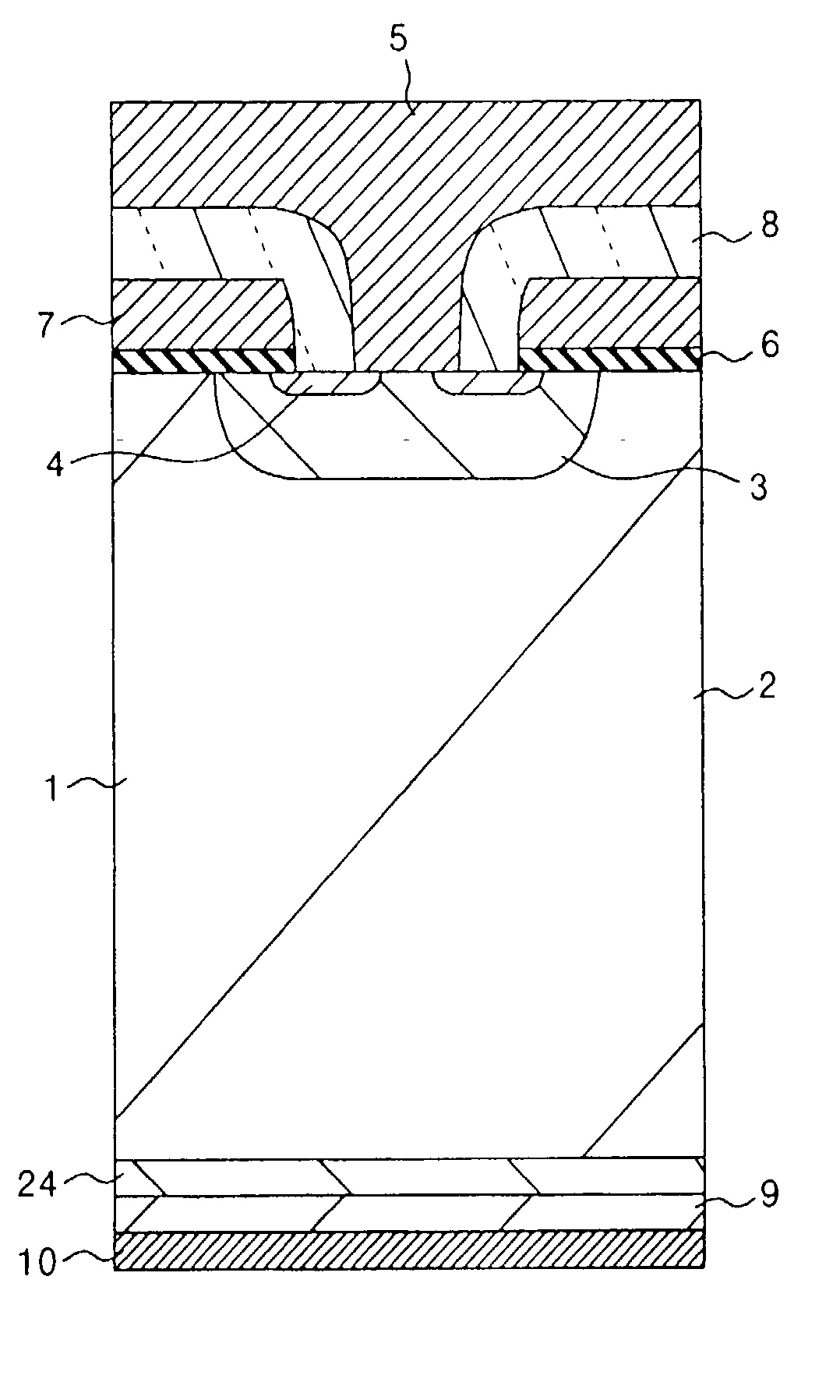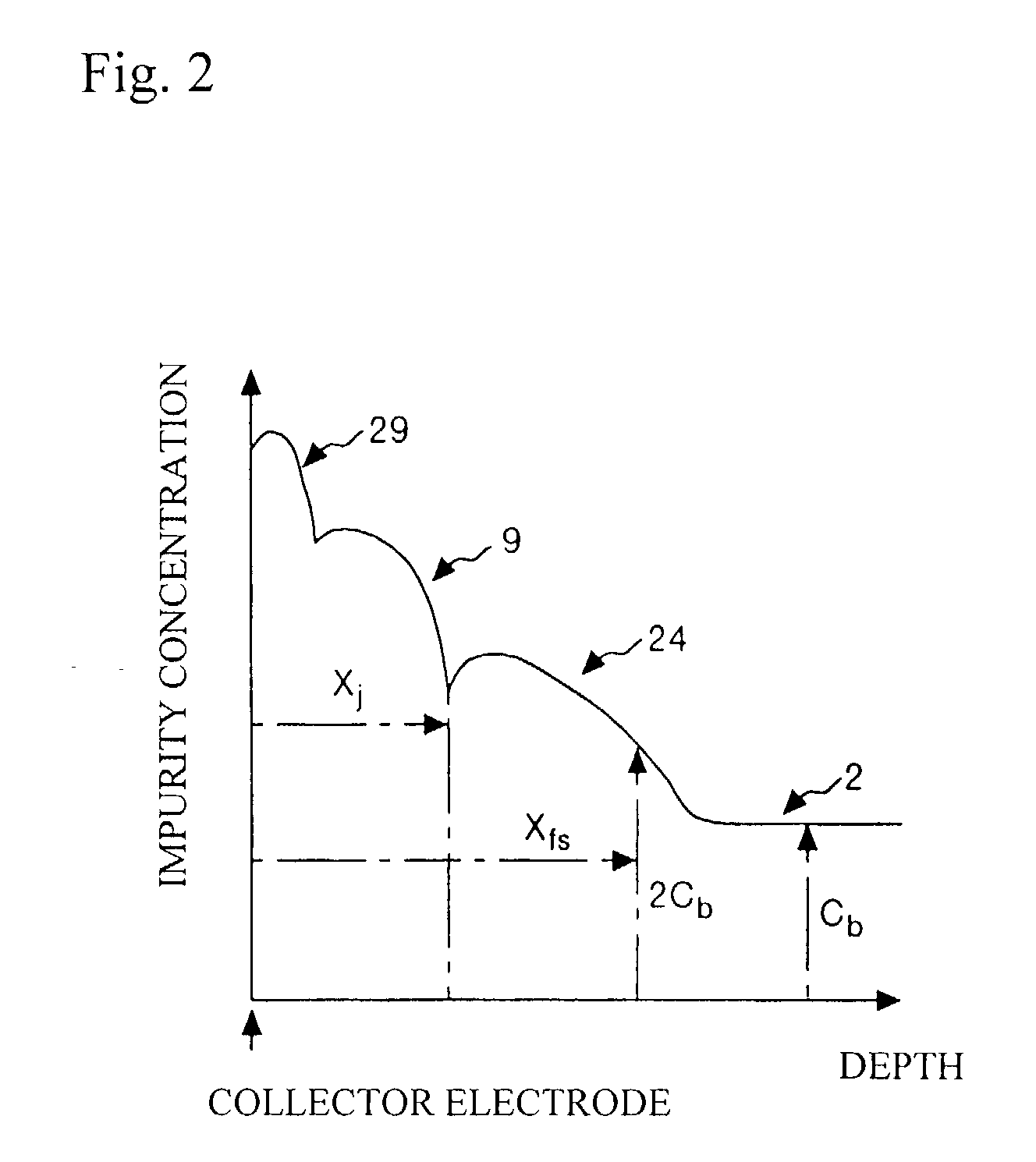Method for manufacturing a semiconductor device
a semiconductor and manufacturing technology, applied in the direction of transistors, electric devices, basic electric elements, etc., can solve the problem of difficult formation of diffusion layers thinner than the above-indicated lower limit, and achieve the effect of high yield
- Summary
- Abstract
- Description
- Claims
- Application Information
AI Technical Summary
Benefits of technology
Problems solved by technology
Method used
Image
Examples
Embodiment Construction
[0053] FIG. 1 is a cross-sectional view of an example of a semiconductor device manufactured by a method according to the present invention. The illustrated semiconductor device is an IGBT with a planar gate structure including a base layer 2 that is composed, for example, of an n-type semiconductor substrate 1 made of a silicon FZ wafer. On the surface region of the base layer 2, a p-type channel diffusion region 3 is formed. In this channel diffusion region 3, an n-type emitter diffusion region 4 is formed.
[0054] On a part of this emitter diffusion region 4, a gate electrode 7 is formed through a gate-insulating film 6. An emitter electrode 5 is electrically connected to the channel diffusion layer 3 and the emitter diffusion region 4, and insulated from the gate electrode 7 through an insulator film 8. In a shallow portion of the reverse surface region of the base layer 2, a field-stop layer 24 composed of an n-type impurity diffusion layer is formed. A p-type collector layer 9 i...
PUM
 Login to View More
Login to View More Abstract
Description
Claims
Application Information
 Login to View More
Login to View More - R&D
- Intellectual Property
- Life Sciences
- Materials
- Tech Scout
- Unparalleled Data Quality
- Higher Quality Content
- 60% Fewer Hallucinations
Browse by: Latest US Patents, China's latest patents, Technical Efficacy Thesaurus, Application Domain, Technology Topic, Popular Technical Reports.
© 2025 PatSnap. All rights reserved.Legal|Privacy policy|Modern Slavery Act Transparency Statement|Sitemap|About US| Contact US: help@patsnap.com



